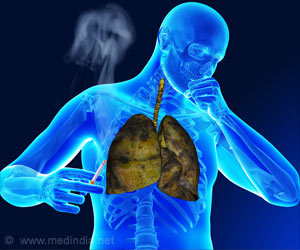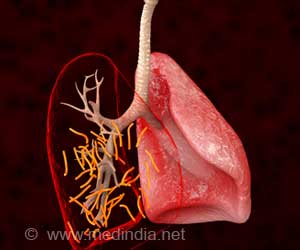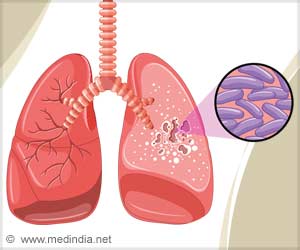Tuberculosis kill more than 80,000 children and the main challenge lies in lack of effective diagnostic tests and drugs to treat children with TB.

The road ahead
Access to diagnosis and care is a major challenge, feels Dr Graham. "The challenges that remain are that of correct diagnosis—too many people in the region do not have the confidence to make a correct diagnosis of TB in children. We still have the issue of trying to find TB in children diagnosed with pneumonia, in malnourished children. We definitely need better diagnostics. Better notification of child TB cases is also important. There are many more kids who have been diagnosed with TB but are never reported to the program. And unless we have reliable data on how many kids have TB, we will not be able to plan out well for appropriate funding, evidence based advocacy, and appropriate interventions to deal with the problem. There has to be evidence based policy guidance and the political will and leadership to do so," said Dr Graham.
Currently there is a lack of effective diagnostic tests that can detect TB in children, as well as of child-friendly drug formulations for treatment and care for children with TB and/or those in contact of someone diagnosed with TB. Dr Cherise Scott, Director, Pediatric Programs, TB Alliance (Global Alliance for TB Drug Development) emphasized upon the need for new tools to diagnose TB in children. All existing tests are sputum based and it is difficult for children to produce the sputum. Moreover they have less TB bacteria due to pauci-bacillary nature of the disease. So correct diagnosis becomes all the more difficult.
She said to CNS that, "Very often we have to depend upon clinical diagnosis and X-Rays, which are not confirmatory tests to detect TB. I think diagnostics for TB in children is even more neglected than treatment. We need new tools that do not rely on sputum. Use of GeneXpert has been recommended for diagnosing TB in children, but this tool is not available everywhere and moreover it is still sputum based. There is a lot of research going on to use other body fluids for diagnosis."
In a symposium at this conference, Dr Ben Marais, Associate Professor, The Children's Hospital at Westmead Clinical School and Deputy Director, Marie Bashir Institute for Infectious Diseases, shared some of the recent advances made for diagnosing TB in children. He was informed that there has been a growing interest in:
Advertisement
-Using a selection of markers as a point of care screening test, by identifying a serological finger print of active TB—promising combinations have been identified but require validation.
Advertisement
-PCR based Xpert MTB/RIF has been shown to be good also for extra thoracic samples like FNAB, bone marrow, and other tissue fluid. The new Xpert Ultra has a further improved sensitivity.
-The String test-- a noninvasive test for collecting sputum sample by swallowing a tablet with a thin string which is taped inside the patient’s cheek—after 4 hours the string is withdrawn obtaining the sample. It is used in adults who cannot produce sputum. But the yield in children is lower and kids.
-Stool samples by GeneXpert are being used to diagnose TB in children living with HIV.
Creating child-friendly drug formulations and speeding the development of new childhood TB treatments is another issue that needs serious attention. In 2010 WHO had released revised dosing guidelines for pediatric TB drug doses (increasing the dosage per kg body weight for isoniazid, rifampicin and pyrazinamide), based on evidence that children were not receiving enough TB medicines. The guidance and policy changed, but treatments conforming to these guidelines were not produced. To this day, providers concoct their own formulations by splitting or crushing pills that are made for adults, leading to improper treatment, and resulting in poor health outcomes and development of drug resistance.
Lamenting that even today there is a lack of appropriately dosed quality assured easy to administer drugs for children with TB, Dr Cherise Scott of TB Alliance told CNS, "TB Alliance has been working with other partners for making pediatric formulations of the current first line TB drugs. It has developed child-friendly products, in the correct dosages, that are better tasting and simpler to administer. We hope these will be available in the market by 2016".
From bad tasting big, broken and/or crushed pills to small, fruit flavored and water dispersible pills is a big step ahead indeed!
But then there is need of new approaches to accelerate new pediatric TB drug development too. As of now, there is a generally a gap of 7 years or more between development and availability of new adult products and their pediatric formulations.
Dr Scott feels that, "This is more so because the drug industry finds it more profitable to concentrate on developing adult products generally, and so lags behind in making child friendly formulations. Accelerated drug development pathway should integrate adult and pediatric development process. We need to do studies and soon enough, to understand how the new drugs will work in children. This is what we are doing at TB Alliance. As soon as safety profiles will allow, we will start developing new formulations. Traditionally companies have staggered testing in different age groups—from the oldest to the youngest. But this is quite flawed as we can test for different children’s age groups simultaneously, thus cutting the time involved in testing for pediatric drugs. We should not lag behind anymore. Then again, the question of having 2nd line drugs still remains. We hope that some of the 2nd line drugs, like injectibles, will be replaced very soon with friendlier options".
Dr Cherise Scott mentions the main challenges that still remain to tackle pediatric TB - lack of funding and resources; contact investigation and case notification of children to bring them into the system as there should be no reason for any child with TB to be not treated and get cured; and paving the way for new products and new innovations, not as an afterthought, but keeping children in minds right from the beginning.
Source-Citizen News Service(CNS)-Shobha Shukla










